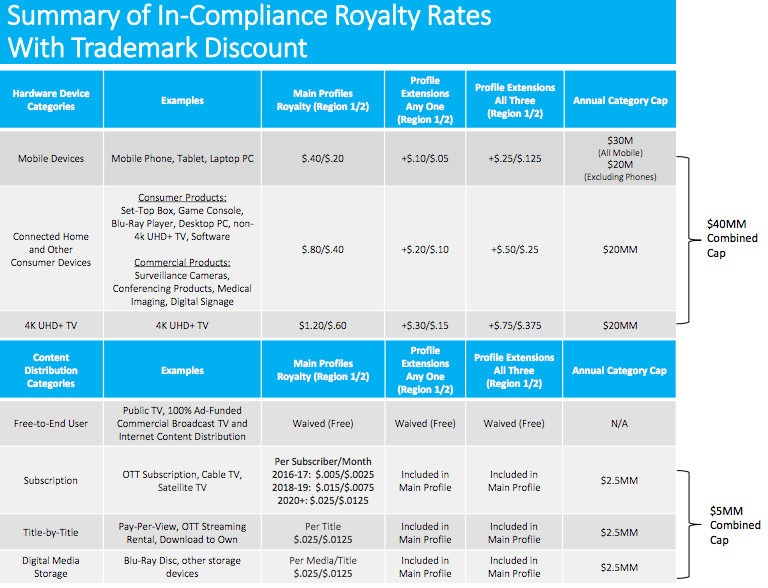Samsung Licenses HEVC

Click on image to enlarge.
BOSTON
—HEVC Advance said that Samsung Electronics has become both a licensor and licensee of the HEVC Advance HEVC/H.265 Licensing Program.
As a licensor, Samsung will make its essential patents available through the HEVC Advance patent pool and gain access to “a portfolio of patents essential to implementing the HEVC/H.265 video compression standard.” HEVC compression handles 4K video for broadband distribution systems and is the video codec defined in the emerging ATSC 3.0 over-the-air TV transmission standard. Samsung plans to use the codec in its 4KTVs and Galaxy smartphones. Samsung appears to be the first major consumer electronics maker to sign on through HEVC Advance, according to the patent pooler’s
.
HEVC Advance started accepting licensing requests in January of 2016. It announced the
Get the TV Tech Newsletter
The professional video industry's #1 source for news, trends and product and tech information. Sign up below.
for streaming content last November, after throwing the industry a curveball with a fee structure that called for 0.5 percent of revenues on HEVC-compressed content, which could have cost Netflix upward of $100 million a year, according to
, principal analyst for Frost & Sullivan. At the time, MPEG-LA also was licensing HEVC, but primarily for equipment. The industry pushed back on the streaming royalties and HEVC Advance acquiesced by eliminating fees “on HEVC functionality implemented in application layer software downloaded to mobile devices or personal computers after the initial sale of the device, where the HEVC encoding or decoding is fully executed in software on a general purpose CPU. Examples of the types of software within the policy include browsers, media players and various software applications.”
HEVC Advance’s North American
on HEVC main profile now comprise 40 cents per mobile device—smartphones, tablets, laptops—plus 10 cents on any single profile extension or 25 cents for all three, with a $30 million annual cap for all mobile devices and a $20 million cap for mobile devices minus smartphones. For 4KTVs, the main profile per-device fee is $1.20, plus another 30 cents for an additional profile or 75 cents for all three, with a $20 million annual cap. Set-top boxes, game consoles, Blu-Ray players, desktop PCs, non-4KTVs, software, surveillance cameras, video conferencing equipment, medical imaging gear and digital signage are all under an 80 cent fee for the main profile, 20 cents for one additional profile and 50 cents for al three, with a $20 million annual cap.
Content distribution fees remain, with those for material free to consumers waived. Subscription video services incur a monthly per-subscriber fee of half a cent for the rest of 2017; 1.5 cents for 2018-19; and 2.5 cents for 2020 and beyond, with a $2.5 million annual cap. On-demand and digitally stored titles are 2.5 cents with a $2.5 million cap.
Also see....
Sept. 24, 2015
“
HEVC Advance Reconsiders Royalty Structure
”
Alternative codecs gained attention, including Google’s VP9 and a new one from Cisco called “Thor,” intended as a royalty-free alternative to HEVC.
